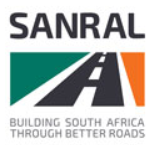Better planning through partnerships
It is the responsibility of the South African National Road Agency (Sanral) to manage more than 20 000km of South Africa's national road network. A core task of Sanral's road management function is planning.
Explains Mpati Makoa, Sanral's Environmental Manager: " Sanral takes planning very seriously and partnerships are seen as key to planning."
Once a traffic-related problem has been identified through Sanral's road monitoring process, engineers are tasked with planning a solution. Sometimes road-improvement solutions are limited by existing developments like other roads and buildings. At other times, engineers have more flexibility to explore alternatives and propose a range of possible solutions.
But any road construction project requires more than choosing the best plan from an engineering perspective. This is the point at which planning becomes an integrated partnership. By employing tools such as Environmental Impact Assessment (EIA) process, which includes public participation, road-improvement plans from an engineering perspective are assessed in terms of their impact on biodiversity, socio-economic and heritage resources. This integrated planning process involving different partners allows plans to be thoroughly assessed so the best plan for road users and the environment is chosen for implementation.
A good example is Sanral's proposed construction of a ring road around the town of Ermelo in Mpumalanga province. Ermelo is located along three major national routes - the N2, N11 and N17. In addition to being important routes for tourist traffic, all three roads are busy freight corridors for timber, agricultural produce and coal. As more and more vehicles pass through the town of Ermelo, traffic flows have been compromised and road safety threatened.
Various engineering plans for Ermelo's ring road are currently being scrutinised through a comprehensive EIA. An initial scoping process and the resultant report, which was approved in March 2014, found no environmental fatal flaws related to the ring road. However, a range of socio-economic impacts that may occur were identified by interested and affected parties through public participation. These, as well as biodiversity and heritage impacts, are currently being assessed through specialist studies as part of the EIA, which is expected to be finalised during 2015.
Similarly, plans to improve the N2 linking East London and Mthatha in the Eastern Cape are being explored and assessed by engineers. Currently the N2 passes through the congested central business districts of two towns, Butterworth and Dutywa, causing significant delays for travellers. In response, Sanral is exploring the viability of constructing an alternative road that would improve traffic flow past both towns and shorten travel time between East London and Mthatha.
"By connecting cities, towns and rural areas, roads are the economic arteries of development, so they must be maintained and upgraded. Integrated and participative planning detailing all the impacts of proposed road upgrades means that the best choices can be made", says Makoa.
